OCHROLEUCUM (Chaix) Niederle, 2014
Co je doopravdy Sedum rupestre 1., Skalničkářův rok 69: 56.
Synonyms :
Sedum ochroleucum Chaix (1786) / Sedum rupestre ssp. ochroleucum (Chaix) Hegi & Em. Schmid (1922)
Sedum anopetalum DC. (1808) / Sedum rupestre ssp. anopetalum (DC.) Arcang. (1882) / Petrosedum anopetalum (DC.) Grulich (1984) / Petrosedum rupestre ssp. anopetalum (DC.) Velayos (1989)
Sedum rufescens Ten. (1811)
Sedum hispanicum DC (1815)
Sedum verlotii Jord. (1860)
Distribution : Switzerland, France, Italy, Albania, Bulgaria, Hungary, Romania, Serbia, Croatia, Macedonia, Slovenia, Greece, Turkey (European part)
Description (by 't Hart & Bleij in IHSP 2003) :
Glabrous perennial herbs; sterile branches ± procumbent, rooting.
Leaves imbricate, linear-oblong, mucronate, terete, basally spurred, 10 - 15 mm, green or glaucous.
Inflorescences : Flowering branches erect or ascending, 15 - 40 cm, inflorescences terminal corymbs with 3 - 5 branches, densely glandular-pubescent, erect and flat-topped in bud, branches scarcely recurved, bracts leaf-like, glandular-pubescent.
Flowers (5 - to) 6 - to 8-merous, subsessile, sepals basally connate, equal, triangular, long acuminate, 5 - 7 mm, densely glandular-pubescent, petals free, oblong, cream-coloured or greenish-white, 8 - 10 mm, erect during anthesis, filaments white, glabrous, anthers yellow.
Cytology : 2n = 34, 68, 102
Ray Stephenson writes (Sedum, Cultivated Stonecrops, 1994, p. 121) : "Petals are very distinct as they remain upright. Pedicels, bracts, and huge sepals have glandular hairs. Budding inflorescences are erect, fruiting inflorescences are concave, and plants usually have a fairly creeping habit. Out of flower this species is indistinguishable from P. rupestre or P. montanum."
Plants from the W range are generally much smaller and shorter while in the Balkans plants are far more robust.
All the following habitat photos show the smaller form of P. ochroleucum.
Observation à Sucuraj, île de Hvar, Croatie, alt. 10 m sur terrain calcaire / calcareous soil.
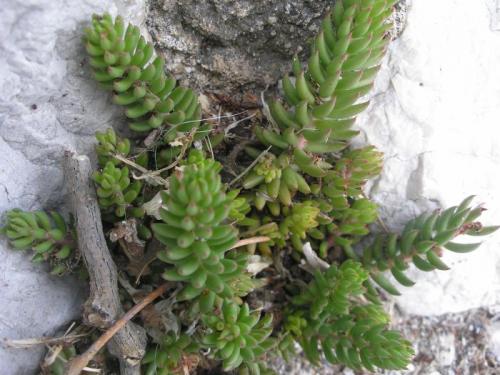
Photo Nina Bjelovucic
P. ochroleucum, Haute Provence, Forcalquier, France :
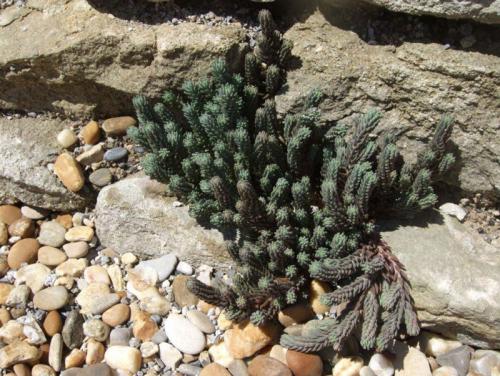
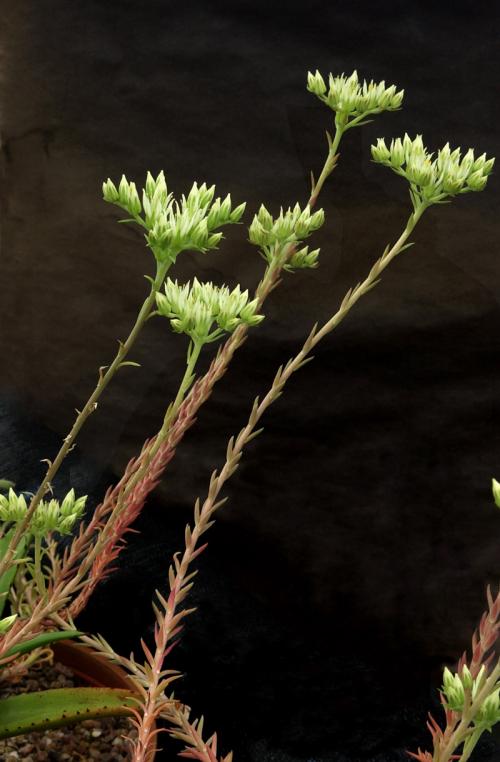
Photo Roy Mottram
Observations sur le Mont Rose - Massif de Marseilleveyre - Marseille (France, Bouches du Rhône), alt. 10m, terrain calcaire / calcareous soil.
Crassulaceae observées: Petrosedum ochroleucum, P. sediforme, Sedum acre, S. album, S. dasyphyllum, S. litoreum,
30 mai 2010 :
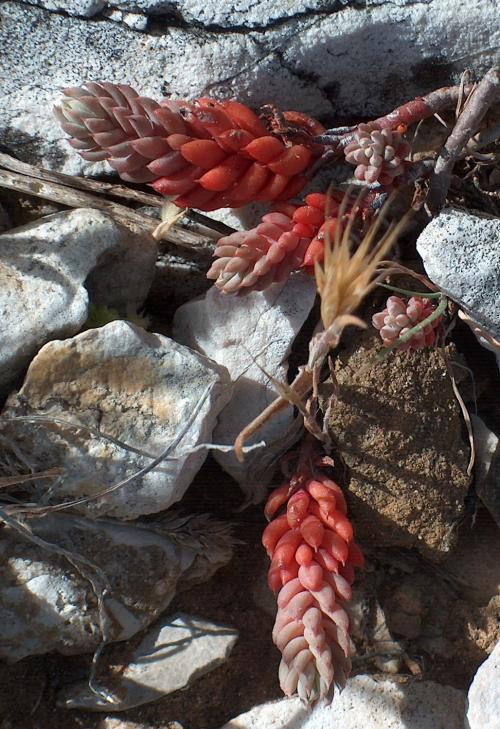
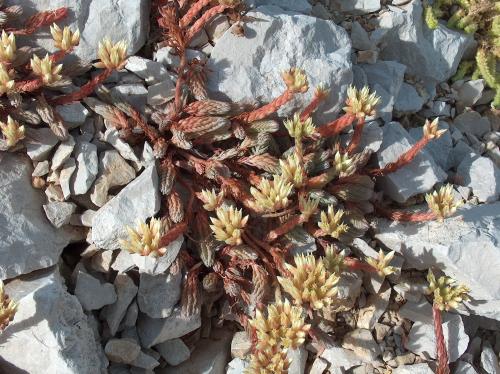
Petals erect during anthesis :
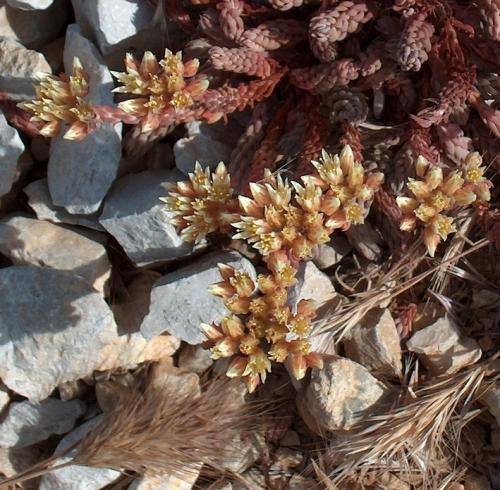
Inflorescences erect and flat-topped :
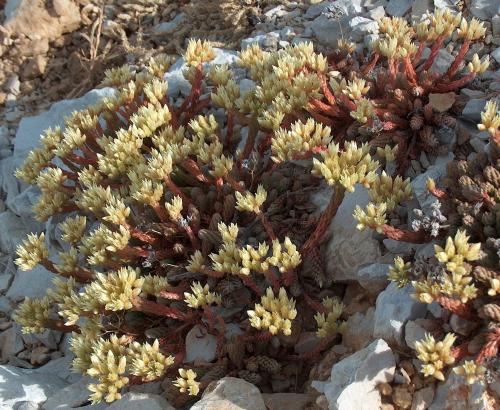
16 avril 2011, plante en bouton / plant in bud :
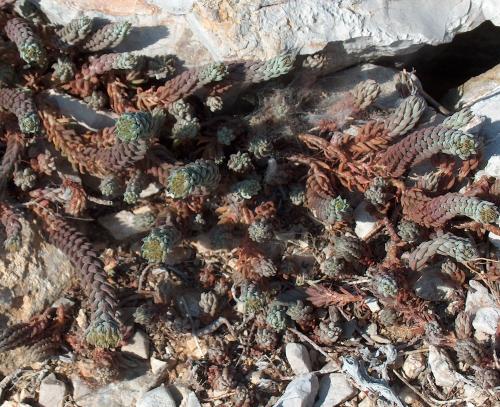
24 septembre 2011, souffrant de la sécheresse après un été très sec / in bad shape after a very dry summer :
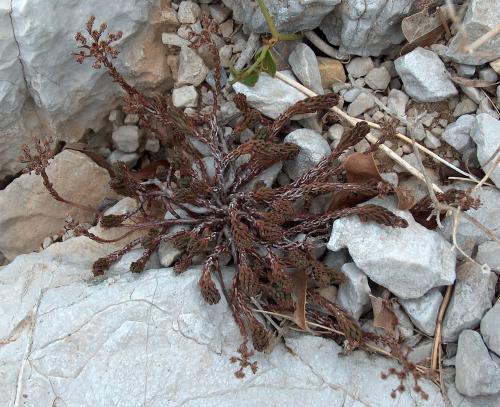
Observations sur le Mont Ventoux (France, Vaucluse), 14 mai 2011, terrain calcaire / calcareous soil.
Crassulaceae observées :
Tête des mines, alt. 840m : Petrosedum ochroleucum, P. sediforme, Sedum acre, S. album, S. dasyphyllum, Sempervivum calcareum.
Près du sommet / near the top, alt. 1900m : Petrosedum ochroleucum, Sedum acre, S. atratum, Sempervivum tectorum var. guillemotii
Près du sommet / near the top, alt. 1900m :
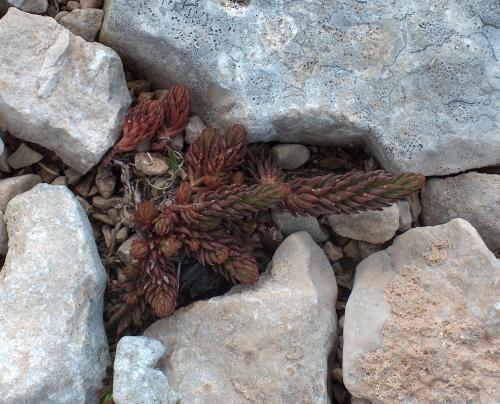
Observations à Allauch (France, Bouches du Rhône), terrain calcaire / calcareous soil.
Crassulaceae observées: Petrosedum ochroleucum, P. sediforme, Sedum acre, S. album, S. dasyphyllum, Umbilicus rupestris.
Notre Dame du château, alt. 270m,16 mars 2007 :
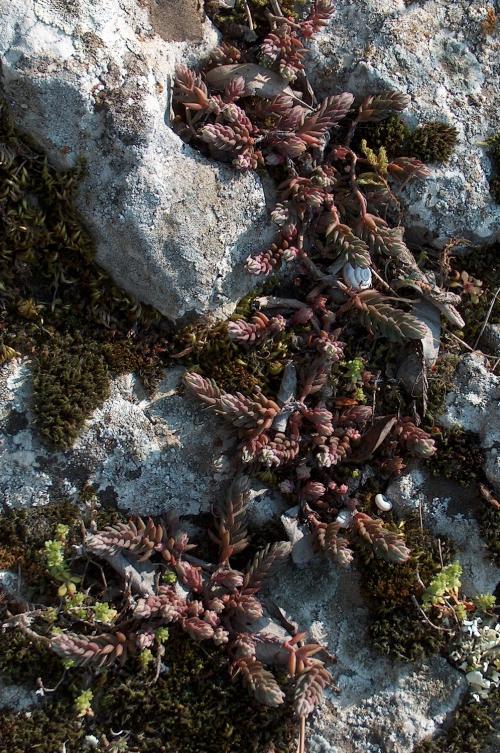
Notre Dame du château, alt. 270m, 22 février 2008 :
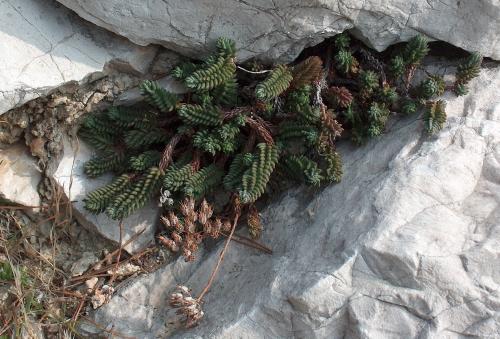
Vallon de l'amandier, alt. 260m, 10 mars 2011 :
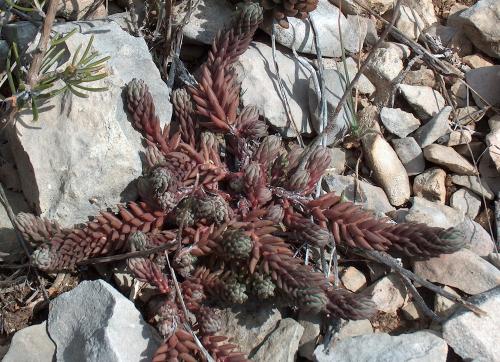
Observation au col de Vauvenargues (France, Bouches du Rhône, Massif de la Sainte Victoire), alt. 960m, terrain calcaire / calcareous soil (17 mai 2009).
Crassulaceae observées :
- Alt. 410m : Petrosedum ochroleucum, P. sediforme, Sedum album, S. dasyphyllum, Umbilicus rupestris.
- Alt. 960m : Petrosedum ochroleucum, P. sediforme, Sempervivum calcareum.
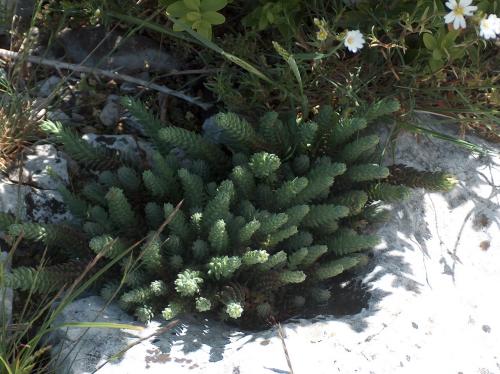
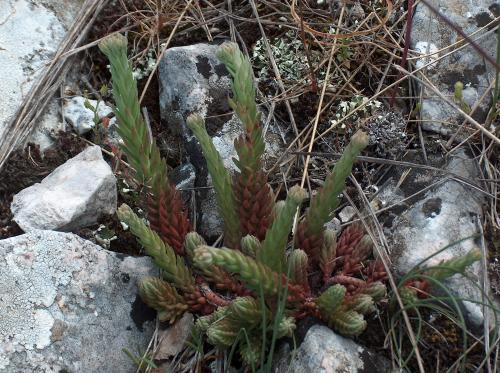
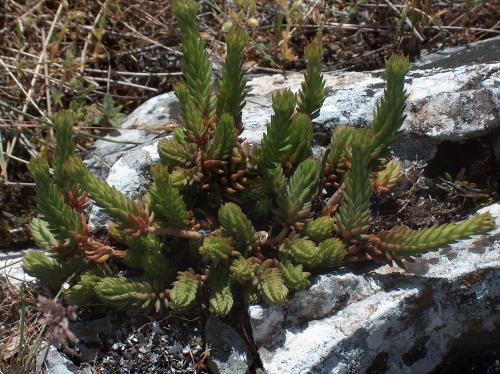
Photos et textes Eric Barbier
Plants in cultivation :
P. ochroleucum from Rhodope Mountains :
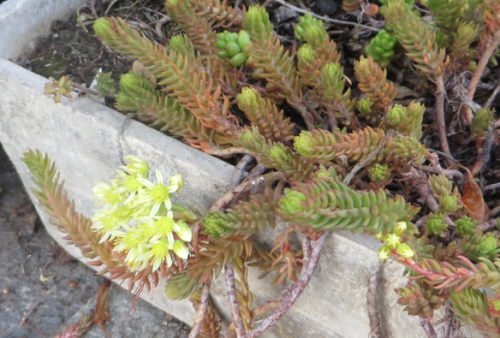
Petals are more spreading than in the type :
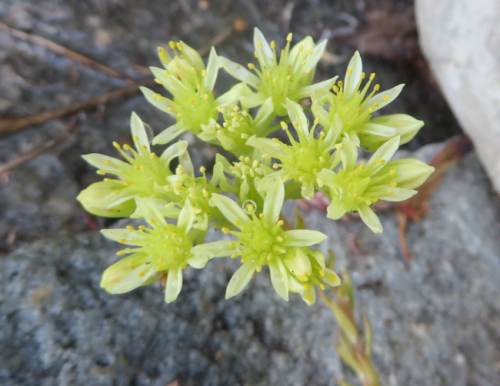
Photos Margrit Bischofberger
P. ochroleucum from Sliven area :
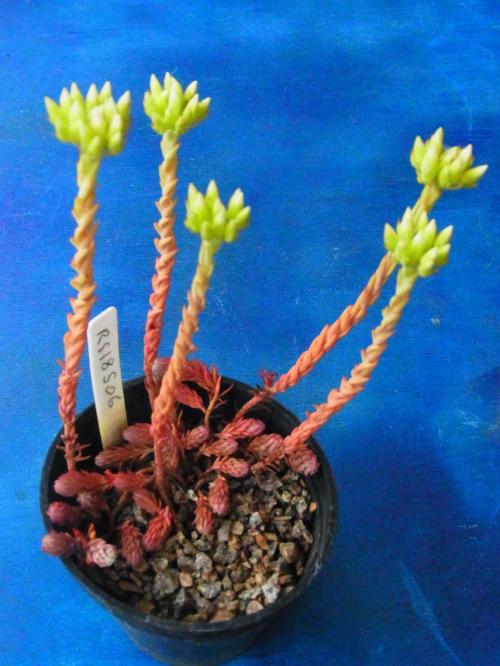
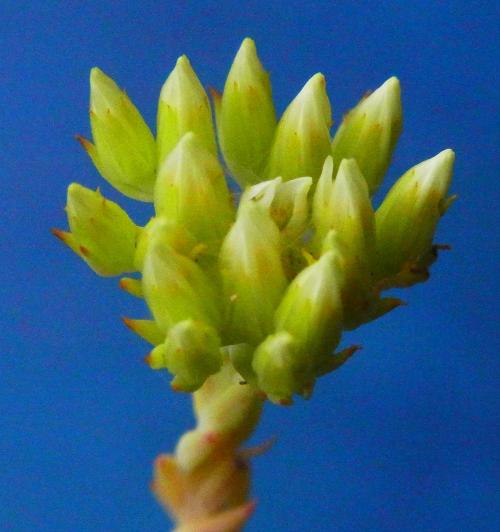
Photos Ray Stephenson